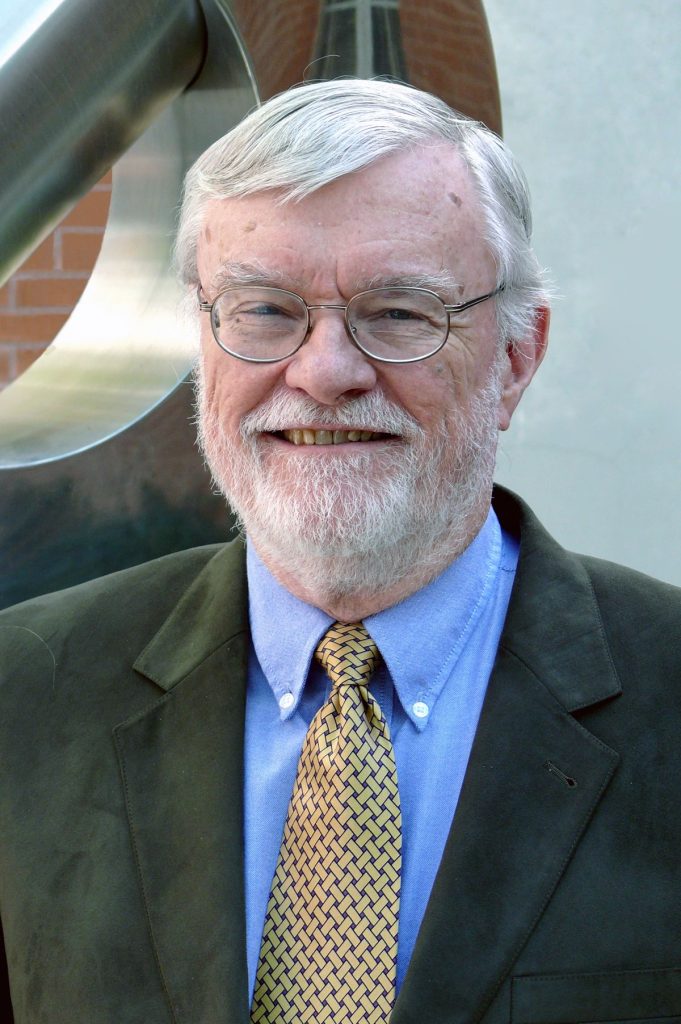W. David Arnett
Class of 2015-16

University of Arizona
National Academy of Sciences
Henry Norris Russell Lectureship, American Astronomical Society
When astrophysicists study a supernova, an exploding star that briefly outshines a nearby galaxy, they apply Arnett’s law to explain how the brightness of the explosion changes over time.
That law is named for astrophysicist David Arnett, a pioneer in the scientific study of exploding stars.
Arnett’s work has led to a deeper understanding of the remnants that result from supernovas—black holes, neutron stars, and white dwarfs—as well as the absence of such remnants. His research has shown that any immediate remnant of a supernova is governed by its production of the radioactive isotope 56Ni. Arnett also developed the first theoretical models to accurately follow light curves, providing the foundation for the discovery of the accelerated expansion of the universe.
Arnett earned his bachelor’s degree at the University of Kentucky in 1961. He received his master’s degree in 1963 and his doctoral degree in 1965 from Yale University, where he studied under the renowned astrophysicist Alastair G. W. Cameron. As a postdoctoral student, Arnett worked with Nobel Prize recipient and astrophysicist W. A. Fowler at the California Institute of Technology and astronomer Sir Fred Hoyle at Cambridge University in England.
After briefly serving on the faculties at Rice University, The University of Texas, and the University of Illinois, Arnett joined the University of Chicago in 1977 as the B. and E. Sunny Distinguished Service Professor. In 1988, he moved to the University of Arizona as Regents Professor of Astrophysics.
Arnett’s scientific interests span theoretical astrophysics and stellar astronomy. The scope of his research includes the origin of chemical elements, supernovae, neutron stars, and black holes; computer modeling of turbulent compressible flow; stellar evolution; and experiments with high-energy-density plasma.
He is a member of the National Academy of Sciences, the American Academy of Arts and Sciences, and Phi Beta Kappa. He is a fellow of the American Physical Society and the American Association for the Advancement of Science.
In 2009, the American Physical Society presented Arnett with the Hans Bethe Prize, which recognizes outstanding work in theory, experiment, or observation in astrophysics, nuclear physics, nuclear astrophysics, or closely related fields. In 2012, the American Astronomical Society selected Arnett for its Henry Norris Russell Lectureship, which is awarded for eminence in astronomical research. That same year, he received the Marcel Grossmann Award from the International Center for Relativistic Astrophysics.
Other significant honors include the Alfred P. Sloan Research Fellowship, 1970–72; the Yale University Distinguished Graduate Award in Physical Sciences and Engineering, 1980; the Alexander von Humboldt Prize, 1981; and the Chandrasekhar Lectureship at the S. N. Bose Center for Basic Sciences in Kolkata, India, 2008.
Arnett has written four books and published 211 peer-reviewed articles.
As a TIAS Faculty Fellow, Arnett will collaborate with faculty–researchers in the Department of Physics and Astronomy in the College of Science.
For more updated information: https://scholar.google.com/citations?user=mQavesEAAAAJ&hl=en
Students
Daniel Nagasawa – 2015-16
